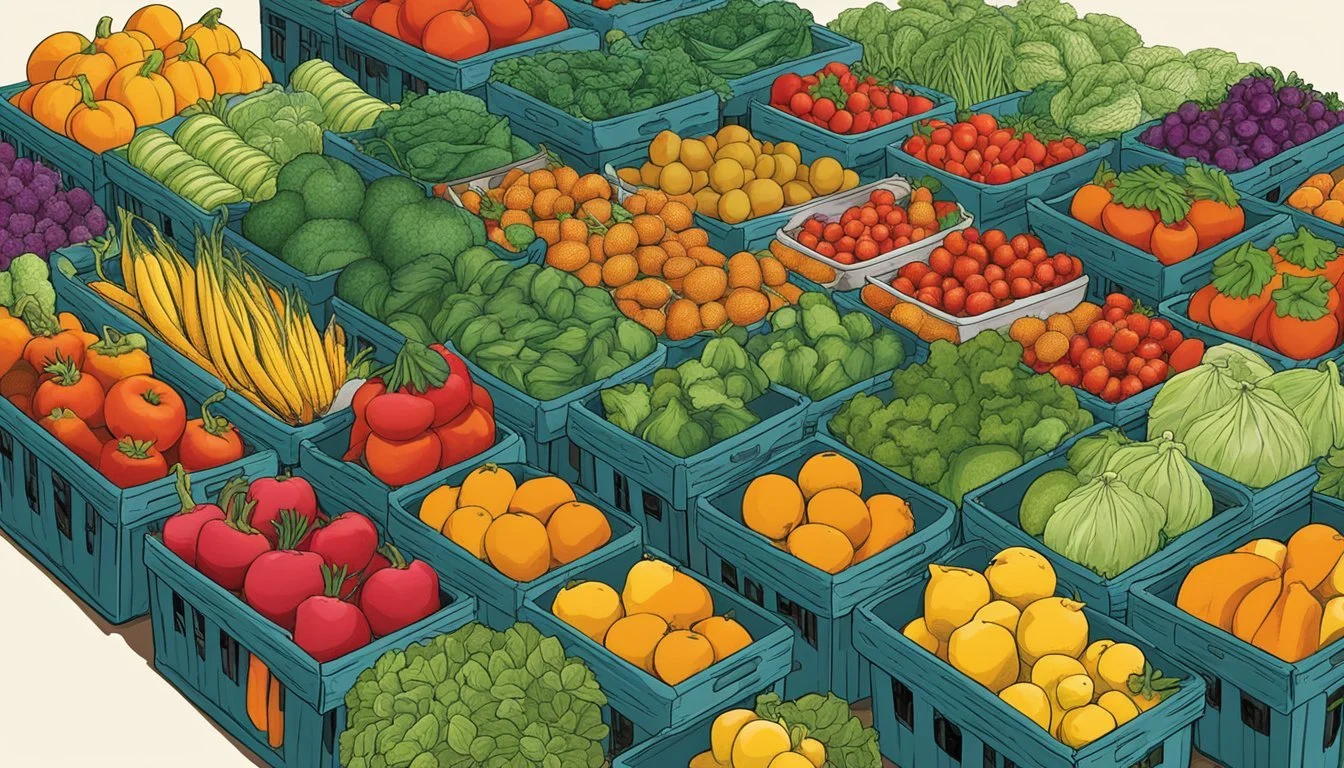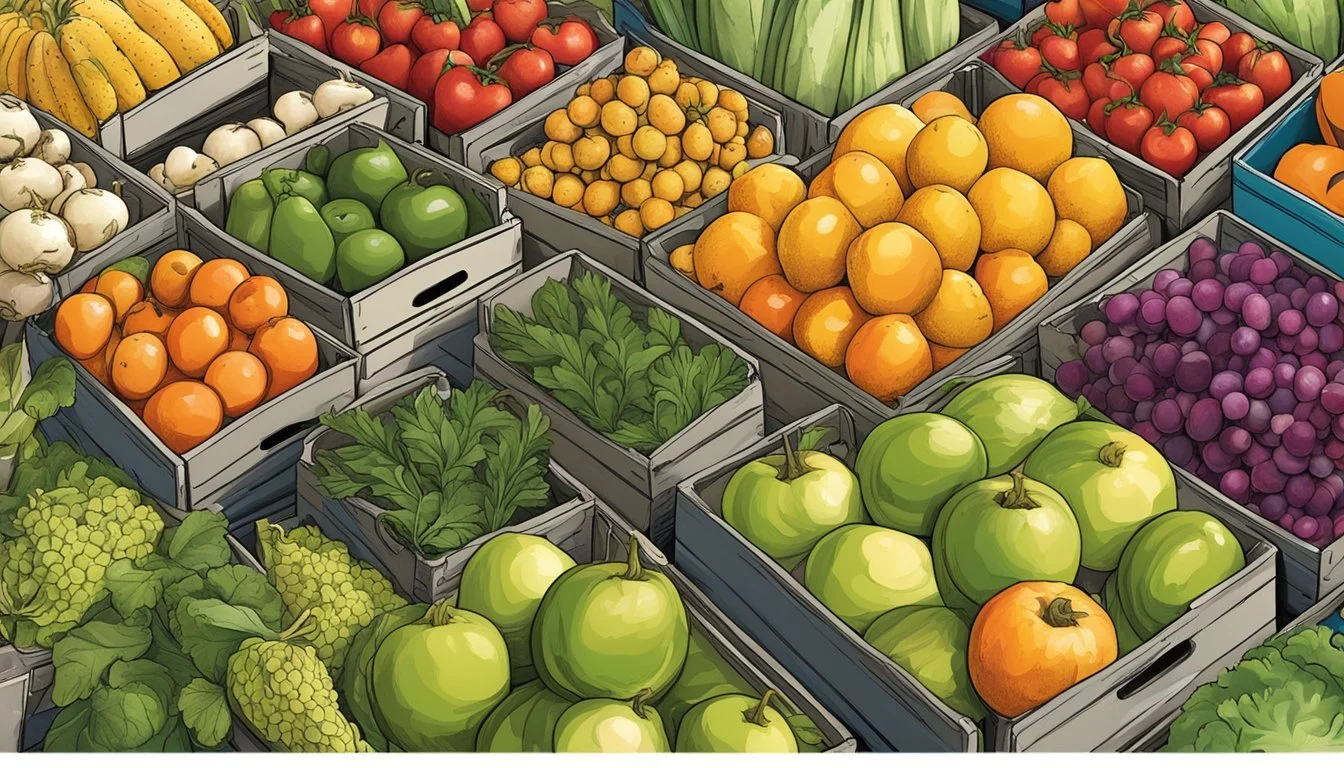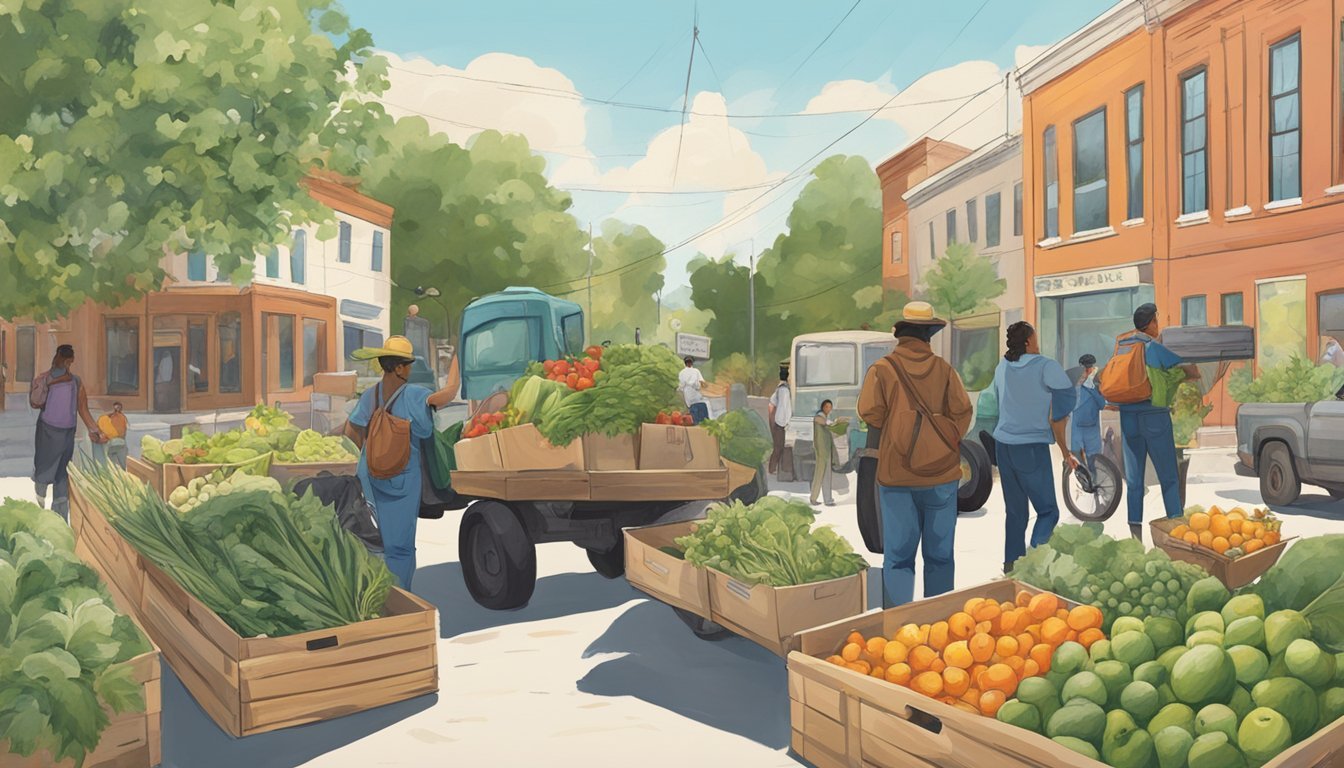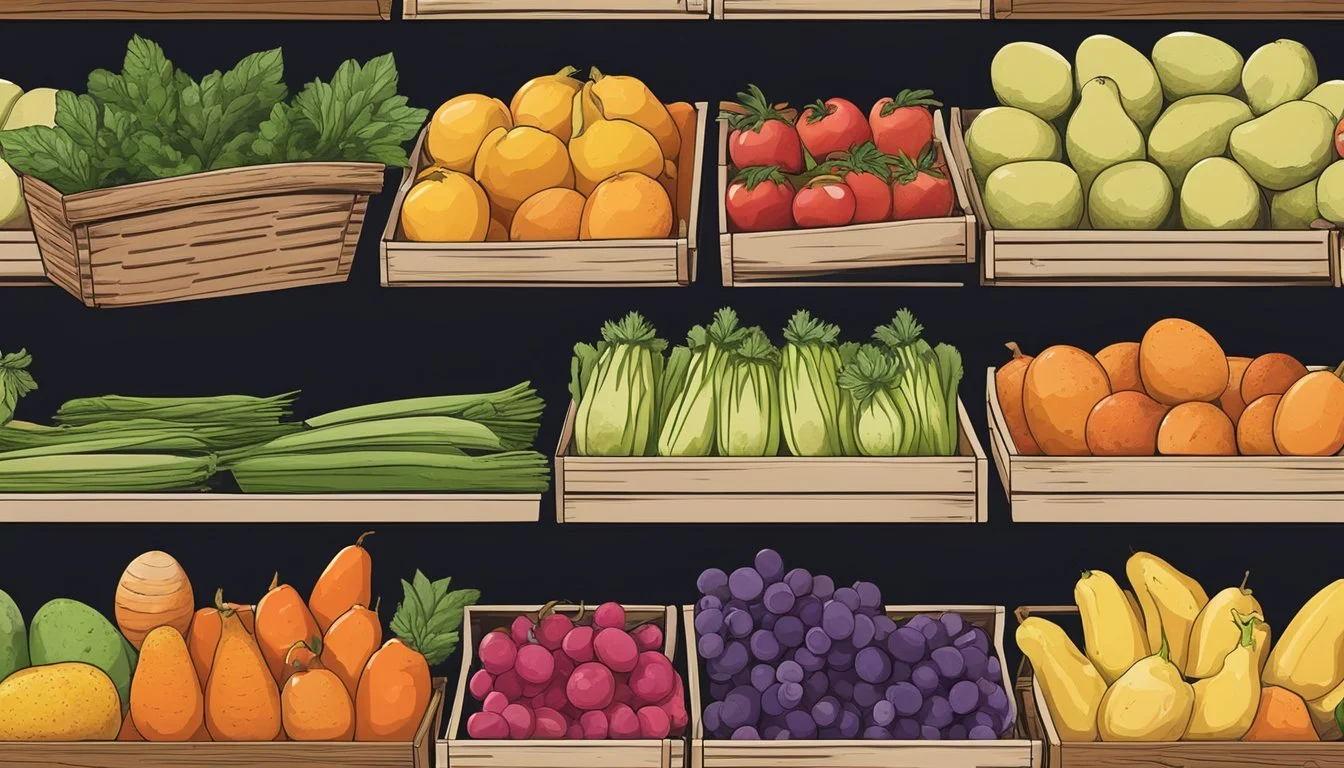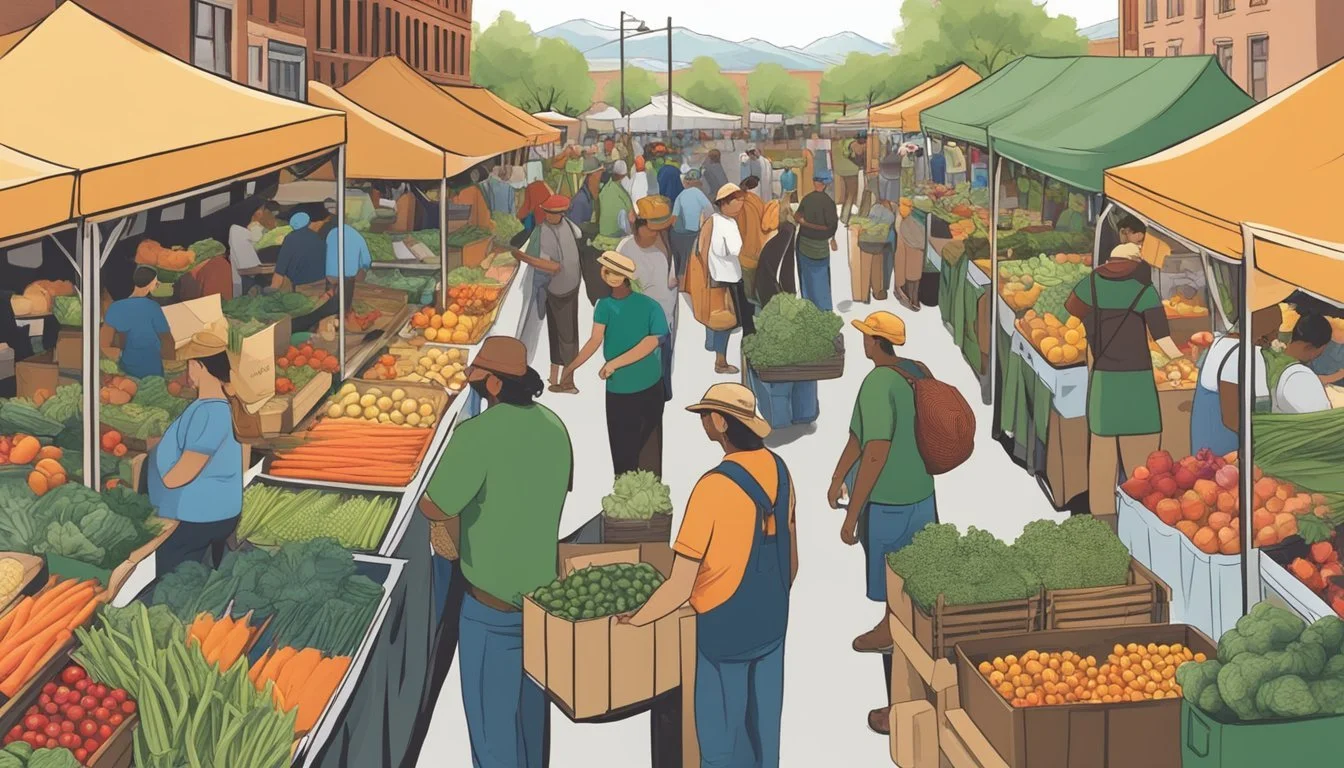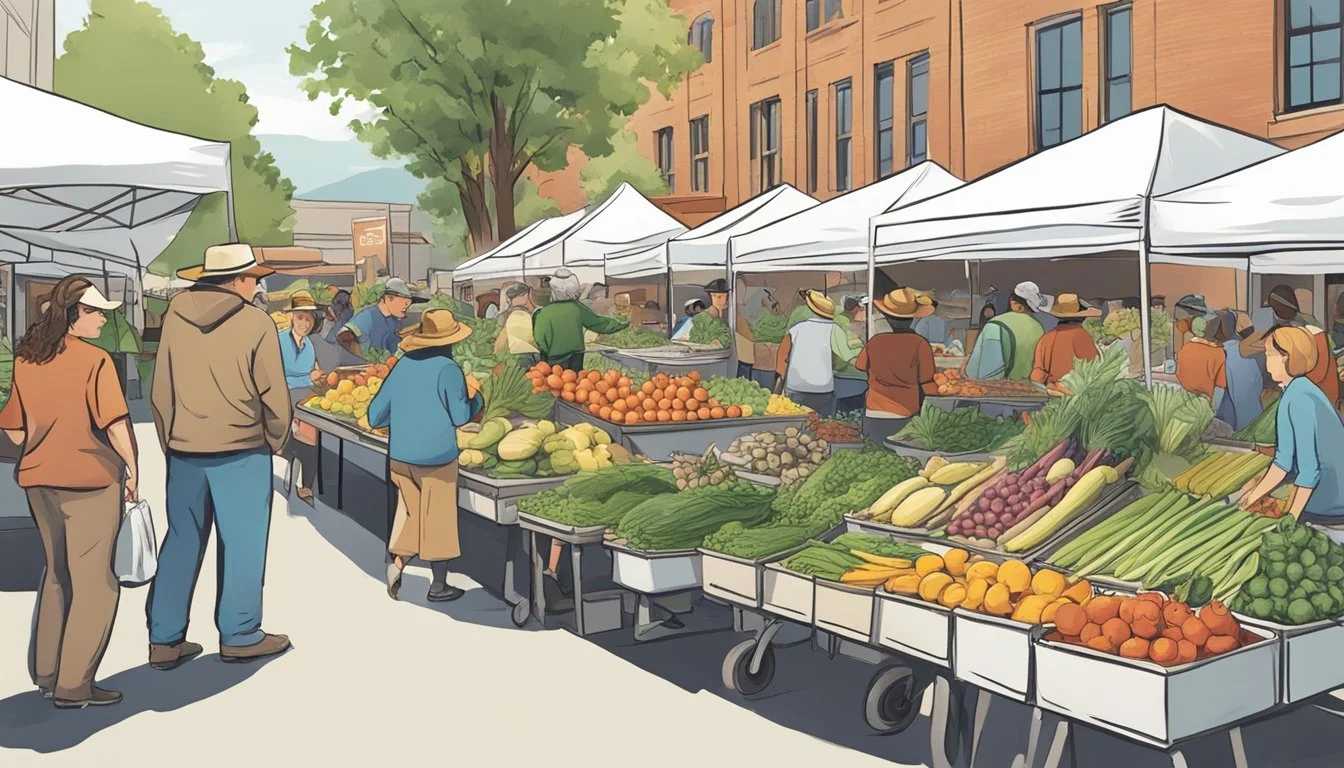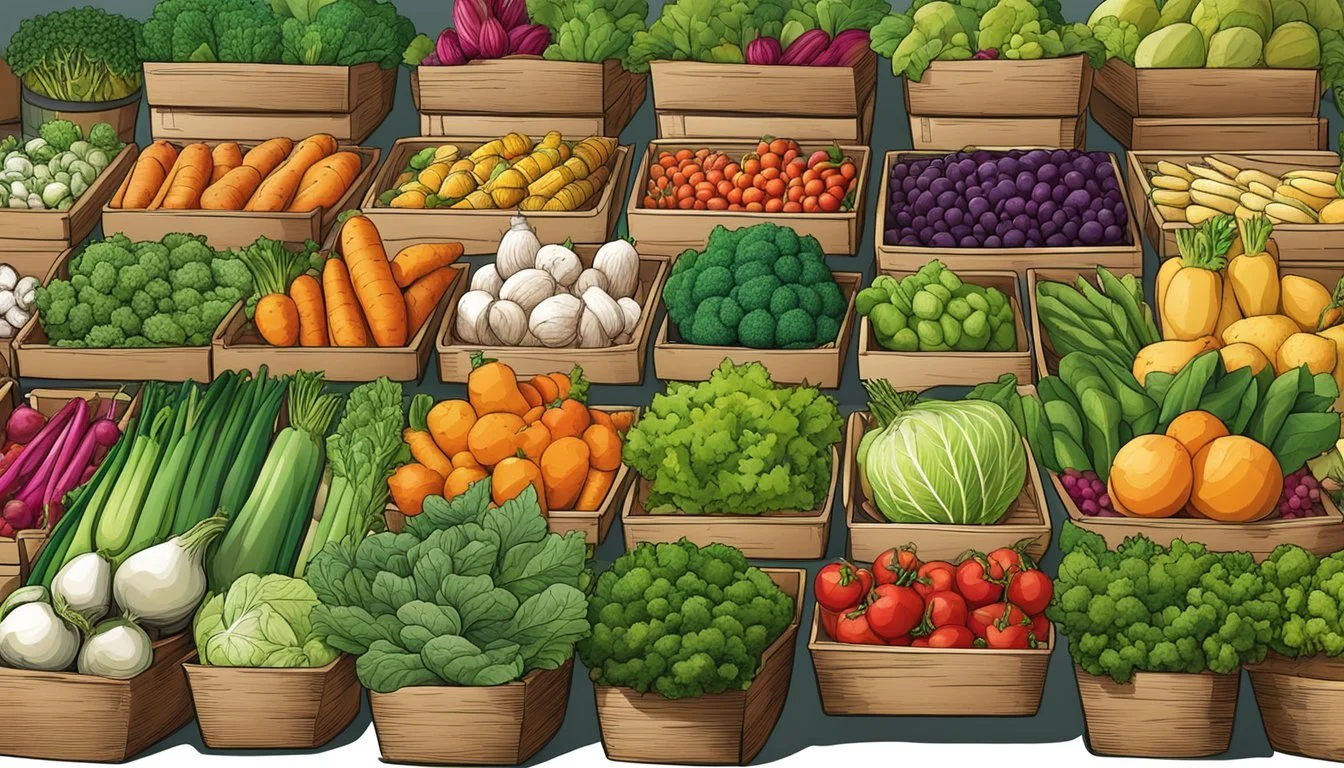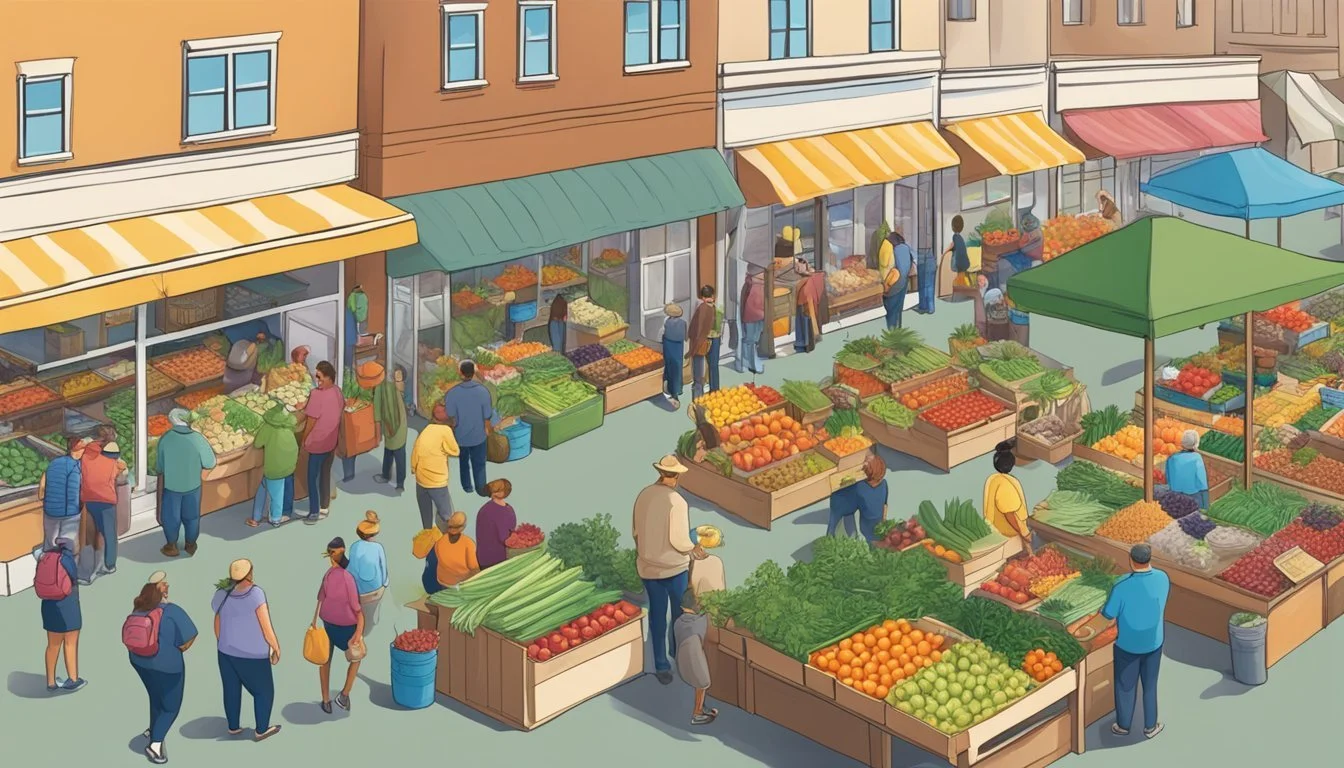Community Supported Agriculture (CSA) in Salt Lake City, UT
A Guide to Local Produce Partnerships
Community Supported Agriculture (CSA) has taken root in Salt Lake City, Utah, offering residents a fresh perspective on farm-to-table eating. These programs establish a partnership between local farmers and community members, ensuring a consistent market for farmers while providing members with regular shares of freshly harvested produce. In Salt Lake City, a variety of CSA options are available, featuring an array of products from traditional vegetables to fruit, meat, honey, eggs, and dairy.
As an urban center with a growing interest in sustainable living, Salt Lake City's CSA programs are thriving. They're providing urban dwellers with direct access to high-quality, seasonal food, harvested from their own region. The typical model sees community members purchase their shares before the season begins, which assists farmers with the upfront costs of seeds and equipment, truly aligning the community with the rhythms of agricultural life.
The CSA initiative in Salt Lake City not only supports local agriculture but also fosters community engagement and education. Residents have opportunities to learn more about the sources of their food and connect with those who grow it. In turn, this encourages a more sustainable local economy and promotes healthier eating habits. With such programs, Salt Lake City is nurturing a community-centric food system, where the well-being of its consumers, producers, and the environment are inextricably linked.
What Is Community Supported Agriculture?
Community Supported Agriculture represents a symbiotic relationship where individuals back a farm operation, creating a unique partnership between producers and consumers in the realm of agricultural production.
Defining CSA
Community Supported Agriculture (CSA) is a cooperative agrarian model that allows shareholders to purchase a "share" of the harvest from local farms. This advance investment supports the farm's operational costs, and in return, shareholders receive periodic distributions of the farm's produce, typically on a weekly basis. The concept anchors itself on mutual support, fostering a community-centric food system.
History of CSA in the US
The CSA model was first introduced to the United States in the 1980s, adapting from European and Japanese concepts. It rooted itself in the principles of sustainable agriculture and community involvement. Over the decades, CSAs have grown in popularity across the nation, with Utah hosting its own onset of CSA farms that bring fresh, locally-grown goods to the community, echoing the national trend towards food system transparency and local support.
CSA Model Components
The CSAs function on several core components:
Share: A share represents a portion of the farm's products. It is what the shareholders receive throughout the season.
Farm: The central operative unit in the CSA, where food is grown and distributed to shareholders.
Shareholder: An individual or family who commits to the CSA by purchasing a share, thus investing in the farm's production and sharing in the risk and rewards of the yield. This model stands on the pillars of sustainability, local production, and shared risk, denoting a marked shift away from conventional, large-scale agricultural practices.
Benefits of Joining a CSA
When individuals become shareholders in a CSA, they reap a harvest of advantages ranging from enjoying the freshest produce to strengthening community bonds and bolstering the local economy.
Freshness and Flavor
Produce sourced from a CSA is known for its freshness and superior flavor, as fruits and vegetables are typically harvested at their peak and brought directly to the members. This quick field-to-table process ensures that shareholders enjoy the nutritional benefits and taste of freshly grown produce without the prolonged shelf time found in conventional retail settings.
Economic Support for Farmers
CSA members provide economic support for farmers, offering upfront payment which alleviates financial pressure at the start of the growing season. This model gives farmers a reliable income stream and a guaranteed market for their harvest, enabling them to focus on sustainable farming practices and high-quality crop production without the uncertainties of selling in fluctuating markets.
Community Building
CSA embodies the essence of community building, creating a partnership between shareholders and farmers. This relationship fosters a sense of community as members often share recipes, cooking tips, and even form gatherings. It encourages a closer connection to the food source and promotes the concept of shared responsibility in food production and consumption.
How CSAs Work in Salt Lake City
Community Supported Agriculture in Salt Lake City offers residents a way to buy local, seasonal produce directly from farmers. Through CSA programs, individuals purchase shares for access to a portion of the season's harvest.
Seasonal Shares
Season: The CSA season typically runs from May to October, aligning with local growing periods.
Types of Shares:
Full Shares: Suitable for families or individuals who consume more produce.
Half Shares: Ideal for smaller households.
Bimonthly Shares: Designed for those who prefer less frequent deliveries.
Harvest: Participants receive a variety of fresh produce, reflecting the diversity of crops available throughout the season.
Distribution Methods
Deliveries: Many CSA programs in Salt Lake City offer delivery services, bringing fresh produce directly to members' doors.
Frequency: Weekly or bimonthly, depending on the type of share purchased.
Pick-up Locations: Alternatively, members can pick up their shares at designated locations within Salt Lake City.
Locations: Often at farmers' markets, specific community spots, or directly from the farm itself.
Convenience: Pick-up points are strategically chosen for ease of access for the majority of CSA members.
By engaging with CSAs, Salt Lake City residents participate in a sustainable food system, support local agriculture, and enjoy fresh, seasonal produce throughout the harvest months.
Organic and Sustainable Practices
Community Supported Agriculture (CSA) in Salt Lake City emphasizes the adoption of practices that promise both health for the consumer and responsibility towards the environment. These practices particularly pertain to organic certification and reducing local environmental impact.
Organic Certification
Organic certification for CSA farms in Salt Lake City is a rigorous process ensuring that the produce is grown according to the standards set by the United States Department of Agriculture (USDA). Certified organic produce must be grown in soil that has been free from prohibited substances, typically synthetic fertilizers and pesticides, for at least three years. Stagl Organics, for example, has highlighted its commitment by exclusively using organic-approved farming practices, reflecting their dedication to upholding these standards.
Local Environmental Impact
CSA operations in Salt Lake City focus on the local environmental impact by promoting sustainable agricultural practices. These include methods that conserve water, enhance soil integrity, and reduce the carbon footprint associated with extensive food transportation. CSA farms like Backyard Urban Garden Farms implement organic practices that prioritize the health of the soil and, consequently, the quality of the local produce. By supplying produce directly to the community, these farms ensure a fresh, locally-sourced option for consumers, thereby reducing the environmental stress of long-distance food transport.
Types of Products Offered by Local CSAs
Local Community Supported Agriculture programs in Salt Lake City provide an abundance of freshly harvested products that cater to the community's desire for sustainable and local food options.
Variety of Vegetables and Fruits
Vegetables: CSAs in Salt Lake City typically offer a wide variety of vegetables to their members. Common items include:
Greens such as spinach, kale, and lettuce
Root vegetables like carrots, onions, and beets
Staple crops including potatoes and tomatoes
Seasonal specialties may involve squash, peppers, and corn
Fruit: Depending on the farm's offerings and the season, members might also receive a range of fruits, which could consist of:
Local berries (strawberries, blueberries, etc.)
Stone fruits like peaches and apricots
Apples and pears when in season
Beyond Produce: Eggs, Herbs, and More
Eggs and Herbs: Many CSAs expand beyond produce to offer:
Fresh eggs from pasture-raised chickens
Aromatic herbs such as basil, cilantro, and thyme
Additional Offerings: Some CSAs may also provide:
Beautiful, fresh-cut flowers
Special heirloom and non-standard varieties of vegetables, like purple carrots or heirloom tomatoes, for a unique culinary experience
By subscribing to a CSA, members receive a selection of these products, fostering a rich connection with local farmers and enjoying what the Salt Lake City region has to offer seasonally.
Community Engagement and Education
In Salt Lake City, Community Supported Agriculture (CSA) programs are more than just a source of fresh produce; they are a hub for community engagement and education. These programs provide regular newsletters, offer abundant volunteer opportunities, and conduct robust farmer training programs that strengthen the local food system.
CSA Newsletters and Communication
Community Supported Agriculture programs in Salt Lake City prioritize clear and consistent communication with their members through CSA Newsletters. These newsletters serve as a vital link between the farms and the community, informing members about:
Weekly produce: What to expect in their upcoming shares
Farm updates: Progress and news from the farming operations
Recipes: Ideas for preparing the CSA produce
Events: Invitations to farm-related events and educational workshops
Volunteer Opportunities
CSA programs in Salt Lake City offer various volunteer opportunities that allow members to get their hands dirty and learn about sustainable agriculture firsthand. Volunteers can engage in activities such as:
Planting and harvesting: Assisting with the production of seasonal crops
Farm maintenance: Contributing to the upkeep of farm facilities
Event staffing: Helping with the organization and execution of farm events
Through volunteering, community members gain a deeper appreciation for local food systems and contribute to the success of CSAs.
Farmer Training Programs
Farmer Training Programs provided by Salt Lake City CSA initiatives are designed to educate and empower the next generation of local farmers. These programs typically encompass:
Agricultural skills: Training in organic farming techniques, crop planning, and pest management
Business knowledge: Lessons on running a successful CSA, marketing produce, and managing finances
Participants benefit from the knowledge and experience of established farmers, building a foundation for their own agricultural ventures and ensuring the longevity of local, sustainable farming.
Challenges of Operating a CSA in Utah
Community Supported Agriculture in Utah faces unique challenges that stem primarily from the state's diverse climate and the economic aspects of sustainable farming. Operators must navigate both to ensure their CSA remains viable and effective.
Climate and Growing Season
Utah's climate is characterized by its limited growing season and variable weather, posing a significant challenge for CSA farmers. The state experiences a semi-arid to desert climate, with hot summers, cold winters, and little rainfall.
Length of Growing Season: The typical growing season varies widely, with northern Utah having approximately 160 frost-free days, while parts of southern Utah may see over 200 frost-free days.
Temperature Extremes: Summer days can be extremely hot, with temperatures well above 90°F, further stressing both crops and water resources.
Water Availability: Many areas of Utah deal with drought conditions, making water for irrigation a precious and sometimes scarce resource, crucial to sustaining crops.
Economic Viability
Maintaining economic stability in a CSA model requires careful financial planning and operational efficiency due to several factors inherent to Utah's market and regional characteristics.
Competition and Pricing: Farmers must balance fair pricing for community members while ensuring that the CSA can generate sufficient income to be sustainable.
Cost Management: High input costs for things like water, seeds, and equipment can strain the operation's finances.
Income Dependency: CSA operators often rely on subscription income, which can fluctuate seasonally and with the economy, making financial forecasting challenging.
Market Saturation: The CSA market can be competitive, with multiple farms vying for a share of consumer interest in local and sustainably grown produce.
These challenges underscore the need for strategic planning and adaptability among CSA operators in Utah.
Selecting the Right CSA for You
In Salt Lake City, navigating through CSA options and ensuring the quality of the produce and commitment of the provider is crucial for consumers aiming to support local agriculture.
Understanding Different CSA Options
In Salt Lake City, consumers can choose from various CSA models. Some CSAs offer traditional weekly produce boxes, whereas others allow for more flexibility with customizable shares or point-based systems. For instance, one CSA may offer a fixed selection of vegetables and fruits, while another might allow you to select preferences according to seasonal availability.
Standard Share: Fixed boxes of seasonal produce.
Flexible Share: Points-based system to select produce.
Additionally, the size of the CSA share varies. Some providers offer full or half shares depending on household size or consumption needs.
Evaluating Quality and Commitment
When examining a CSA's quality, one should investigate the variety and freshness of produce offered. Utah's climate allows for a rich assortment of crops, so a CSA that taps into local diversity indicates superior quality and freshness.
Considerations for Evaluating Quality:
Produce Diversity: Look for a range of vegetables, fruits, and herbs.
Freshness: Ask about the time between harvest and delivery.
The commitment of a CSA provider can often be gauged by their transparency and the opportunities for consumer involvement. A CSA that encourages farm visits or offers detailed information about their farming practices typically demonstrates a commitment to building a robust community around local agriculture.
Assessing Provider Commitment:
Transparency: Providers should share farming practices openly.
Community Engagement: Opportunities for consumers to connect with the farm.
Joining a CSA in Salt Lake City
For those interested in joining a Community Supported Agriculture (CSA) program in Salt Lake City, the process is straightforward. One can expect an abundance of fresh, locally-sourced vegetables and a connection to the local farming community upon signing up.
How to Sign Up
Individuals can sign up for a CSA by researching local farms in the Salt Lake City area that offer CSA programs. Each farm will have its own specific sign-up process, which is usually found on their website. Interested parties should:
Subscribe to a farm’s newsletter to receive updates and invitations.
Visit the farm's website to access the sign-up form.
Fill out the necessary details, which may include selecting a share size and pick-up location.
Pay the subscription fee, which can range between $300 and $600, to secure their share of the harvest.
What to Expect After Joining
After joining a CSA, members typically receive weekly or bi-weekly allotments of fresh vegetables. They should:
Expect a diverse array of vegetables throughout the farming season.
Be prepared for the season's variability, as CSA shares mirror the ebb and flow of the harvest.
Stay informed through the farm's newsletter about upcoming CSA pick-up dates and locations.
Participate in the CSA community, often through farm visits or events when these opportunities are available.
Joining a CSA in Salt Lake City allows supporters to contribute directly to their local food system and enjoy the benefits of fresh produce from their community.
Local CSA Farms and Markets
In Salt Lake City, local residents have a robust selection of Community Supported Agriculture (CSA) programs that provide fresh, locally produced fruits and vegetables. These programs bridge the distance between consumers and local growers, fostering direct community support for farming.
Backyard Urban Garden Farms
Backyard Urban Garden Farms, or B.U.G. Farms, embraces the CSA model in the heart of Salt Lake City's Glendale Neighborhood. They offer a diverse array of produce selections through their CSA program which runs seasonally. Subscribers to the program receive weekly shares of fresh produce directly from these urban farms, bolstering local agriculture and reducing food miles.
Downtown Farmers Market
The Downtown Farmers Market presents a lively venue where a variety of local CSA programs showcase their goods. Here, patrons can subscribe to CSA shares or purchase directly from multiple local producers, ensuring access to peak seasonal produce. The Downtown Farmers Market plays a crucial role in sustaining Salt Lake City's local food economy and brings farmers and consumers together in a vibrant community setting.
East Farms and Orchards
To the east of Salt Lake City, East Farms and Orchards provide an abundance of stone fruits, berries, and seasonal vegetables through their CSA programs. These orchards have adopted a sustainable approach to agriculture, focusing on nutrient-dense crops and preserving the health of their land. Consumers benefit from flavorful, orchard-fresh produce while supporting local farming efforts in the region.

